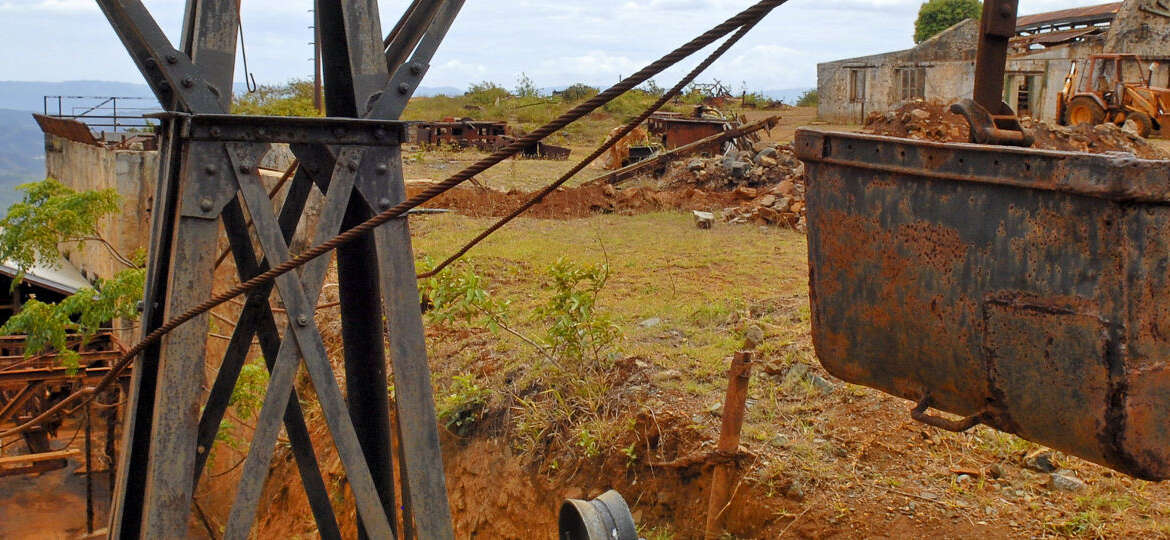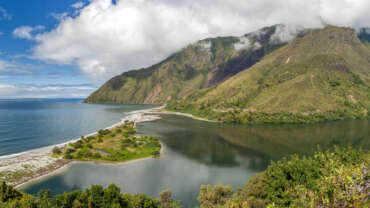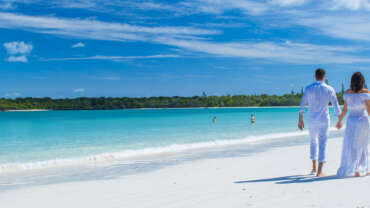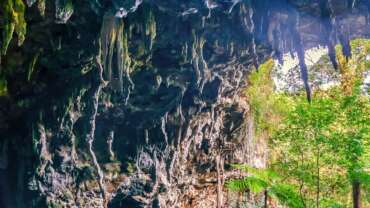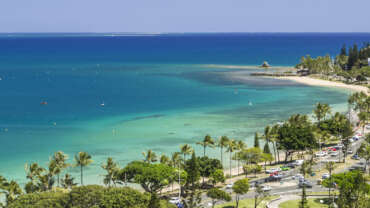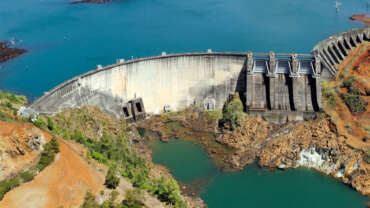West Coast of New Caledonia
The West Coast of the mainland (Grande Terre) shows off a great variety of scenery from its northern tip down to the area surrounding Nouméa. Characterised by both large spaces favouring cattle farming and a lagoon of stunning beauty, the West Coast is also host to a rich cultural heritage.
The North-West of the western coast, up to the Boat Pass, allows you to discover dry and almost moon-like land, as well as the remarkable seabed off the coast of the Poum Reef.
From dry and moon-like beauty of the northern tip to the Caledonian Far West
In addition to the natural beauty of the scenery, where ochres, pinks and oranges are mixed into the usual palette of greens, Poum, just like Koumac, offers an important mining heritage, whose golden tourist nuggets are incontestably the Pilou Mine and the former mining village of Tiébaghi.
Further south, the West Coast belongs to the American Far West. This is the region of stockmen (local cowboys) and great agricultural cultivation. From Koumac to Poya, passing through Kaala-Gomen and Pouembout, the coast offers scenery of wide and long grassy plains, and of savannas covered with paperback trees. The coastline is dominated by mangroves, often little known and yet full of natural sumptuousness.
Hear of Voh, the Lapita potteries, the petroglyphs of Montfaoué: some many world-renowned treasures…
It is at the heart of a mangrove that the world-renowned Heart of Voh is located and whose reputation owes much to the clichés of photographer Yann Arthus-Bertrand. The area around Koné conceals a world-famous archaeological treasure. It is in fact on the site of Foué that the Lapita potteries were discovered, which convey New Caledonia’s cultural heritage spanning millennia. A cultural heritage which the petroglyphs of Montfaoué at Poya come to complete…
From Bourail to La Foa there is also heritage to be absorbed, but here it rests upon the traces left by the penitentiary administration. Fort Teremba, at Moindou, is the most evident demonstration of this…
The lenticular reef: a natural wonder at the heart of a UNESCO World Heritage lagoon
A registered UNESCO World Heritage site, the lagoon in the west coast zone is one of the most beautiful in New Caledonia, notably containing the sublime lenticular reef which stretches from Bourail to Moindou. And what can we say about those islands! Each one is as sumptuous as the next, from Green Island near Bourail to Ténia Islet near Boulouparis.
The Greater Nouméa
As for Païta and Dumbéa, the two communes of the Greater Nouméa have not abandoned their bushman identity, despite significant urban development in recent years. They are a true paradise for hikers in particular. Mont Humboldt for the seasoned hiker, but also the more accessible walking trails: Monts Koghis, Pic Malaoui or Mont Mou to name but three…
Discover the must sees in the West coast
1001 palms in Moindou
Moindou’s Ryawa valley is home to New Caledonia’s highest concentration of royal palms. Able to reach 50 meters in height, over 500 of these trees stand majestically there, the pride of the municipality and their owner.
While Ryawa valley is famed for its concentration of Roystonea Regia (the scientific name for the royal palm), it is not the only site in Moindou to boast this royal presence. And with good reason!
Moindou owes the introduction of this species stemming from Cuba to the Reunionese Jean-Louis Casimir Boyer (originally from the Alpes of Haute-Provence!) who arrived in New Caledonia in 1874 in view of growing coffee beans. Carried in his suitcases were royal palm seeds, which soon appreciated the local humid and sunny climate.
Gouaro Lighthouse
Near the path of the three bays, and overlooking Roche Percée Beach and the Nera estuary, the ruins of the Gouaro lighthouse remind us that, for decades, access to Bourail was principally by sea.
The plan to set up a permanent penal colony in Bourail made it essential to enable regular supplies to the site. Access to Bourail Bay being treacherous, the construction of an instrument to guide the way became necessary.
Originally, it was built with two beams, one white and one red, the first directed towards the keeper’s house, and the second across the hillside. Mariners used the alignment of the beams to guide their ships through the channel into port. A third beam, a green one, located at the outer edge of the Roche Percée, on the Nera side, defined the mooring area.
Tiebaghi – a nickel-chrome village!
When the Caledonian mining industry is mentioned today, it is of course nickel that comes to mind. How different things once were! In the early 20th century, chrome mining in the Tiebaghi massif considerably changed the face of the region, the world’s top producer of the mineral at the time!
The discovery of chrome deposits in Tiebaghi is shrouded in several legends. And you will no doubt enjoy hearing them if you visit this ex-mining village! The only thing that is known for sure is that the discovery was made between 1875 and 1877. Nonetheless, no mining work was started before 1901.
The situation then began to change rapidly. Chrome became a sought-after raw material for the manufacture of special forms of steel. Finally, the Caledonian chrome adventure could begin! And all the more so, given the importance of building up stocks in preparation for the 1st World War…
Château Grimigni – relic of the penal system
The history of the village of Pouembout started in 1883, when the decision was taken to build a penitentiary. It was to extend over nearly 3,500 hectares. From this past, only two buildings remain: the Château Grimigni and Le Pigeonnier (the Pigeon Loft)…
Château Grimigni was built in 1886; after suffering storm damage, it was completely renovated in 2006. The building now accommodates Pouembout’s media center, a cellar for exhibitions and – somewhat amazingly – the community cyberbase!
Built by forced laborers, the imposing architecture stands testament to the fact that the penal authorities not were only based in Bourail or on Île Nou, they also had noteworthy facilities in the North.



